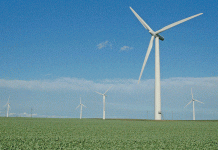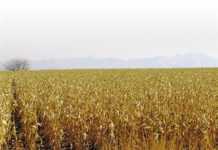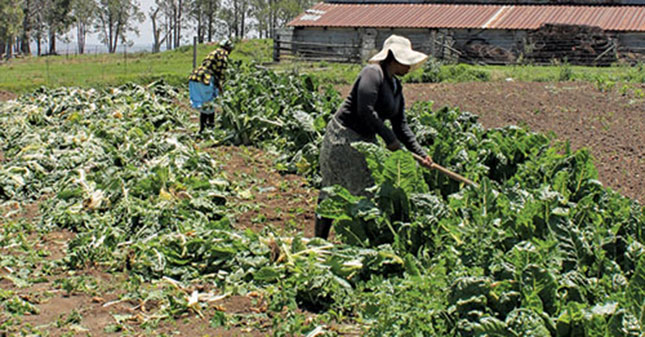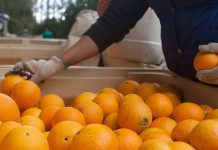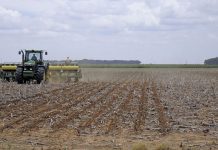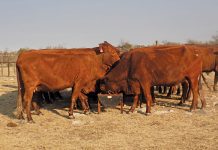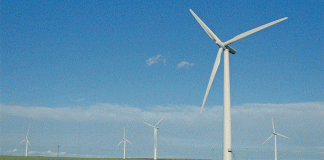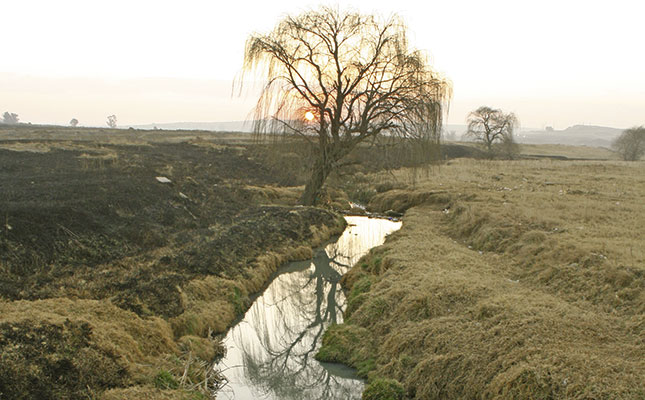
How is water quality measured?
A number of variables affect water quality, including chemical, physical and biological attributes. Water quality is determined through the assessment of these attributes and whether the water complies with certain set standards. These include the South African Water Quality guidelines, the Water Resource Objectives and the conditions set out in a Water Use Licence (IWUL).
The chemical parameters include pH, hardness and dissolved oxygen. The physical parameters include odour and turbidity/transparency. Biological parameters include micro-organisms such as invertebrates, algae, molluscs, plants and fish found within a water sample.
READ:Don’t dump fresh produce!
What is the current state of water quality in South Africa?
It cannot be stated in a blanket approach. Drinking water is assessed against the Blue Drop status, determined by the benchmarking of quality against a set of targets. In the case of surface water resources, a blanket approach is also impossible. Over time, there’s water quality deterioration linked to land-use activities. In South Africa, a river health programme (RHP) assesses the various attributes of rivers throughout the land.
RHP results indicate that river water quality ranges from pristine to highly impacted. Where there is extensive agriculture, the water quality indicates the presence of fertiliser and other agriculture-related impacts. Where there is mining there is also contamination.
Groundwater is also affected by land use. In cases where there’s less development, it may be that the quality of groundwater is saline/hard due to the long-term interaction of the water with the earth, lack of oxidation and the fact that groundwater mobility is much slower than surface water.
The lack of water quality data and monitoring is a major problem. How can the Water Research Commission (WRC) assist in offsetting these risks?
All water-users are supposed to monitor their water quality impacts and report these. The problem may lie with the consistency of monitoring and capturing the data and whether it’s readily available and within what turnaround time. Over time, the WRC has collected water quality data through projects that have been funded over the past 40 years. This data is archived. In the future, it may be accessible on the website. A publications unit deals with requests for reports and data.
The integration, format and timing is what is a risk to the industry in terms of water quality. The WRC has funded a project that has been completed and will be piloted this year. This is a test case to determine whether there’s a possibility of reporting the data by water users to the authorities at an increased frequency (monthly rather than twice per annum) and in a format that’s more useful (electronic, in addition to hard copy reports).
This may be the breakthrough needed for all to ensure that water quality data is available and accessible on a real-time basis.
What are the challenges when dealing with water quality issues in South Africa?
The most important relate to the attitudes of water users. In a semi-arid country we find that there’s poor efficiency of water use.High use in urban and industrial areas and, to some extent, the increased access to water in the rural areas is resulting in increasing wastage, and subsequent contamination. There have to be constant awareness campaigns and, hopefully, a change in attitude. Enforcing compliance should not only rest on the shoulders of government. All water users must ensure sustainable water use.
Sewage effluent that does not meet the discharge standards currently being enforced, together with runoff from fertiliser- based irrigated agriculture, result in hypertrophication (commonly referred to as eutrophication and often found in dams).
This is the water resource’s response to the increased presence of substances such as phosphate and nitrates. Other contaminants from the same sources include bacterial and viral pathogens (sewage) and pesticide/insecticides. Mining contributes to acid mine drainage, which is characterised by increased salinity, heavy metals and low pH. Industrial effluent from varied activities also contributes to water contamination.
How do population growth and urbanisation affect water quality?
Increasing population means there’s a need for more water to be available and this means an increase in the types of land-use activities which subsequently may result in the increase in deterioration of water quality. Where the wastewater infrastructure is not adequate, the load presented by the growing population may result in the effluent not complying with the discharge standards and this would eventually present the water resources with increased pollutant load.
It’s important to acknowledge the role of education, awareness and settlements designed with these challenges in mind, thereby ensuring that infrastructure upgrade and technology improvement is implemented upfront to cater for a growing population.
How does the WRC deal with water quality issues?
It conducts research in most of the water areas across the various key strategic areas (KSAs), including water resource management (KSA1), water-linked ecosystems (KSA2), water use and waste management (KSA3) and water utilisation in agriculture (KSA4). The WRC funds research undertaken by researchers from a wide spectrum of institutions, including universities, research institutes, small, medium and micro-enterprises (SMMEs), non-profit organisations, and even communities.
This provides a concerted effort through which water issues can be addressed. WRC products are aimed at informing policy- and decision-making, human capital development, new products and services for economic transformation, community empowerment, transformation and redress, and sustainable development solutions. The WRC is a partner to the Global Water Research Coalition, which is an affiliate of the International Water Association.
When it comes to food production, what are the main water contamination concerns?
There’s a high demand for fresh water in agriculture and between 60% and 67% of the nation’s fresh water is used by farmers, with about 33% being utilised for the irrigation of crops.
Approximately 35% of all domestic foodstuffs and 85% of all agricultural exports derive from irrigated lands with more than 1,3 million hectares under irrigation. The quality of water use in irrigated agriculture for food production is a major concern and has to meet the SA Water Quality Guidelines’ targets for agricultural use. Water that exceeds the target levels for contaminants may result in contaminated produce, particularly where the food is consumed raw.
In South Africa, the high usage of fresh water for irrigated agriculture could be problematic if the water contains high levels of microbial contaminants since water use is so widespread that no alternative resource would be possible.
The common sources of irrigation water used in South Africa are large reservoirs, farm dams, rivers, ground water, municipal supplies and industrial effluent. Research, however, has found pathogens in treated effluent discharged into other water sources, and the use of such water for irrigation is not recommended.
Currently, there’s little information on a national level regarding the contribution of irrigation water and the associated, potentially contaminated raw produce as well as the linkages with disease. However, possible health risks include diarrhoea and other gastro-intestinal tract infections which may affect
vulnerable groups such as children and old people.
The common sources of irrigation water used in South Africa are large reservoirs, farm dams, rivers, ground water, municipal supplies and industrial effluent. Research, however, has found pathogens in treated effluent discharged into other water sources, and the use of such water for irrigation is not recommended.
Currently, there’s little information on a national level regarding the contribution of irrigation water and the associated, potentially contaminated raw produce as well as the linkages with disease. However, possible health risks include diarrhoea and other gastro-intestinal tract infections which may affect vulnerable groups such as children and old people.
In terms of produce found in retail markets, measures are in place to trace contaminants and disinfect the food. A WRC-funded project conducted in collaboration with the department of agriculture investigated the link between irrigation water quality and food safety. It was found that the microbial pollution levels of rivers and fresh produce monitored at selected sites in various provinces over three to four years did not meet either the international or national faecal guidelines for safe irrigation or human consumption.
The potential of pathogenic organisms being transferred from irrigation water to the surface of fresh produce plus the organisms’ ability to survive in unfavourable conditions presents the scenario where consumers unknowingly face a high risk of being infected with harmful organisms when consuming fresh produce, particularly raw and if not processed further.
What’s the risk for irrigated agricultural produce?
The potential risk of infection from contaminated fresh produce can be seen by the 2011 E. coli outbreak in Europe, which resulted in 49 fatalities and left thousands seriously ill. The risk to irrigated agriculture may range from adverse health effects to job losses when there are national or export embargoes placed on such produce.
Contaminated irrigation water is one of the key issues the WRC has listed as priorities in the next four years. It’s important for the WRC to assist the farming community understand the impact or threat posed by contaminated water on livestock and crops.
Email the Water Research Commission at [email protected] or visit www.wrc.org.za.
This article was originally published in the 25 July 2014 issue of Farmer’s Weekly.

